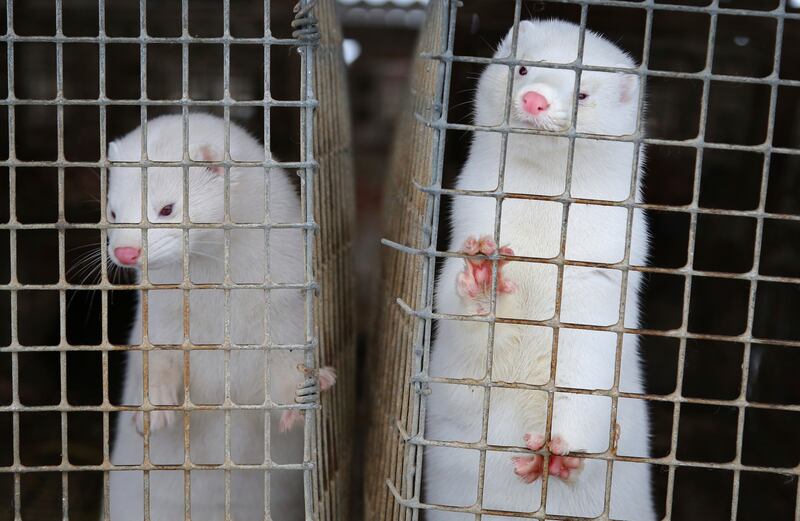Officials are worried that the recent spread of bird flu on a mink farm from mink to mink could herald the spread to other mammals, including possibly humans.
Eurosurveillance, a European journal focused on infectious disease, reported on the late 2022 outbreak of highly pathogenic avian flu at a mink farm in northwest Spain — including the possible public health implications. Because of the spread between mink and also other wild animals, the researchers recommended taking steps to stop contact between minks and wild animals “and to control disease transmission events from minks to farm workers and vice versa.”
International broadcaster Deutsche Welle said when the virus sickened thousands of mink on the farm, more than 50,000 were killed. Farm workers were tested, but were not infected.
Can humans get bird flu?
The H5N1 avian flu variant is a highly contagious strain that has spread fairly freely among birds. But what about humans?
“Human infections with bird flu viruses can happen when virus gets into a person’s eyes, nose or mouth, or is inhaled,” the Centers for Disease Control and Prevention reports.
However, the CDC said there have been fewer than 10 known human cases in over a year and there are no known cases of human-to-human spread recently. That mode of transmission has been extraordinarily rare.
The World Health Organization said that from 2003 to March 31, 2022, “a total of 864 cases and 456 deaths of influenza A(H5N1) human infection have been reported worldwide from 18 countries.”
Bird flu has spread to mammals before, with isolated infections in raccoons, foxes and seals, per Deutsche Welle. It noted that the rare spread to humans and other mammals has been through very direct contact.
But the direct animal-to-animal spread in the mink population is alarming, some experts said.
“The mink outbreak appears to be a rare case where mammals are transmitting the disease to each other rather than through direct contact with an infected bird,” Timm Harder, a bird flu expert at the Friedrich Loeffler Institute in Germany, told the broadcaster. “This is something new.”
And worrisome.
Still, the CDC said the risk to the public is low. But the agency said it is closely monitoring the infections in animals in case the virus changes “to pose a greater human health risk.”
Will bird flu mutate?
Experts told The New York Times they were reassured that no humans tested positive for the virus after working on the mink farm. But they do worry that the fact the virus is spreading so well anywhere could increase the risk of more mutations and more spread, perhaps across species.
Per the Times: “Once a virus starts to spread, it begins picking up new mutations and adapting to its new hosts. Indeed, researchers found that the flu virus they isolated from the mink in Spain had multiple mutations that set it apart from sequences isolated from birds. One of these mutations, in particular, has been previously shown to help influenza replicate better in mammalian cells.”
Wild birds have long been known to serve as hosts for influenza viruses, usually with little impact. But high-density animal farming, from mink farms to poultry farms, where animals are in extremely close quarters, increases the risk of spread and mutation of viruses, experts have said.
The United Nations Scientific Task Force on Avian Influenza and Wild Birds said that’s how H5N1 and other strains have become highly contagious.
A Bloomberg analysis in The Washington Post calls the recent outbreak of H5N1 “a wake-up call” for agriculture.”
Faye Flam wrote, “It should be bigger news that a bird flu has mutated to spread through mammals and is ominously appearing among wild and domesticated animals around the globe. In the past, the inability to spread from one mammal to another was the barrier that prevented bird flu, H5N1 — which has a 50% fatality rate in humans — from becoming a human pandemic. It’s not clear this version, which spread through minks, would be easily transmitted in people, but it has made a step in a dangerous direction.”


